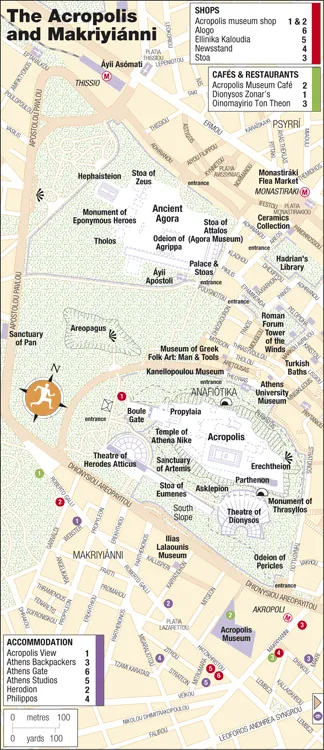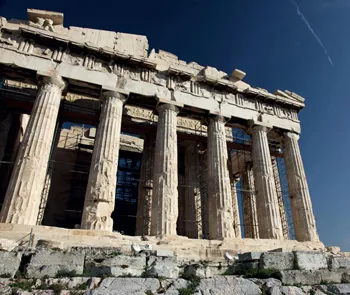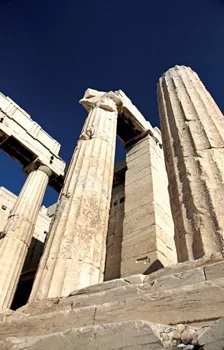![]()
![]()
The Acropolis and Makriyiánni
The rock of the Acropolis, crowned by the dramatic ruins of the Parthenon, is one of the archetypal images of Western culture. The first time you see it, rising above the traffic or from a distant hill, is extraordinary: foreign and yet utterly familiar. The Parthenon temple was always intended to be a landmark, and was famous throughout the ancient world. Yet even in their wildest dreams its creators could hardly have imagined that the ruins would come to symbolize the emergence of Western civilization – nor that, two-and-a-half millennia on, it would attract some three million tourists a year.
The Acropolis itself is simply the rock on which the monuments are built; almost every ancient Greek city had its acropolis (which means the summit or highest point of the city), but the acropolis of Athens is The Acropolis, the one that needs no further introduction. Its natural setting, a steep-sided, flat-topped crag of limestone rising abruptly a hundred metres from its surroundings, has made it the focus of the city during every phase of its development. Easily defensible and with plentiful water, its initial attractions are obvious. Even now, with no function apart from tourism, it is the undeniable heart of the city, around which everything else clusters, glimpsed at almost every turn.
On top of the Acropolis stands the Parthenon along with the Erechtheion, the Temple of Athena Nike and the Propylaia – the gateway through which the ancient sanctuary was entered – as well as lesser remains of many other ancient structures. All of these are included in a single, fenced site. The South Slope of the Acropolis, with two great theatres and several smaller temples, has separate entrances and ticketing, as does the Ancient Agora, on the opposite side. A vast amount of reconstruction is going on, throughout the Acropolis sites – one benefit is excellent new signage, with thorough descriptions, pictures and reconstructions. Most impressive of all is the new Acropolis Museum, looking up at the Parthenon from the quiet, upmarket residential quarter of Makriyiánni.
There are no shops or restaurants within the Acropolis area, but you can buy water, sandwiches and postcards from the stands near the main ticket office. There’s also a handy branch of the sandwich shop Everest right opposite Akrópoli metro station (at the corner of Makriyiánni and Dhiakoú) and plenty of similar places around Monastiráki metro. A couple of restaurants in Makriyiánni are listed in Shops, but there are also cafés and tavernas nearby in almost every direction: see Pláka, Monastiráki (Baïraktaris) and Thissío.
The Propylaia
Today, as throughout history, the Propylaia are the gateway to the Acropolis. In Classical times the road extended along a steep ramp to this monumental double-gatehouse; the modern path makes a more gradual, zigzagging ascent, passing first through an arched Roman entrance, the Beule Gate, added in the third century AD.
The Propylaia were constructed by Mnesikles between 437 BC and 432 BC, and their axis and proportions aligned to balance the recently completed Parthenon. They were built from the same marble as the temple, and in grandeur and architectural achievement are almost as impressive. The ancient Athenians, awed by the fact that such wealth and craftsmanship should be used for a purely secular building, ranked this as their most prestigious monument.
Walking through the gateway, which would originally have had great wooden doors, is your only chance to enter any of the ancient buildings atop the Acropolis. To the left of the central hall, part of whose great coffered roof has been restored (originally this was pain...




